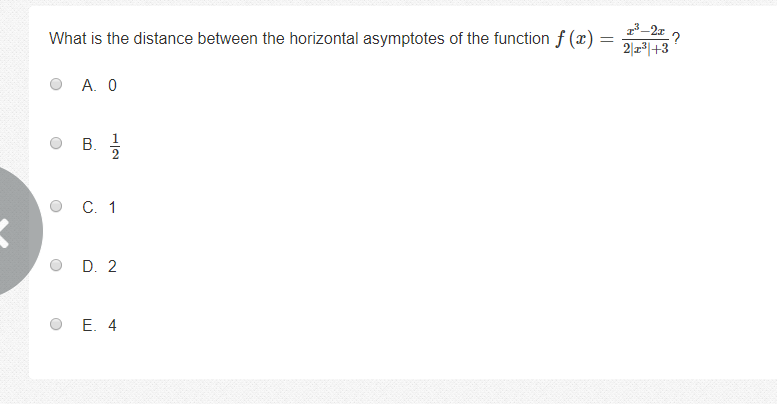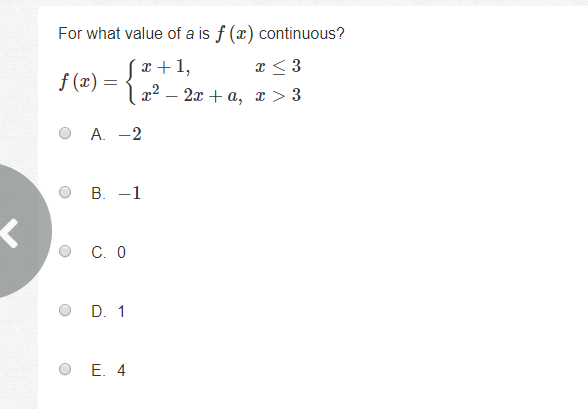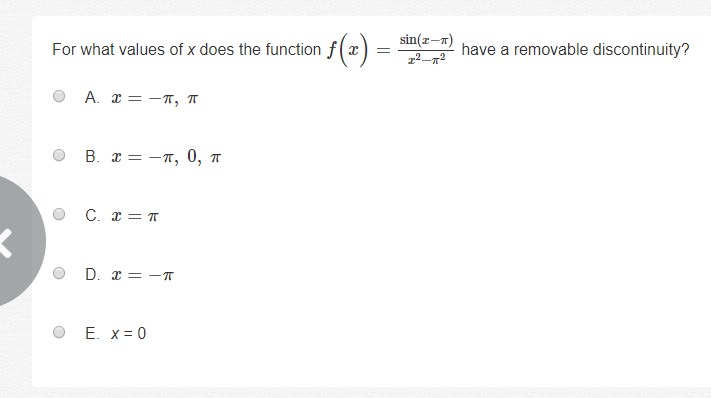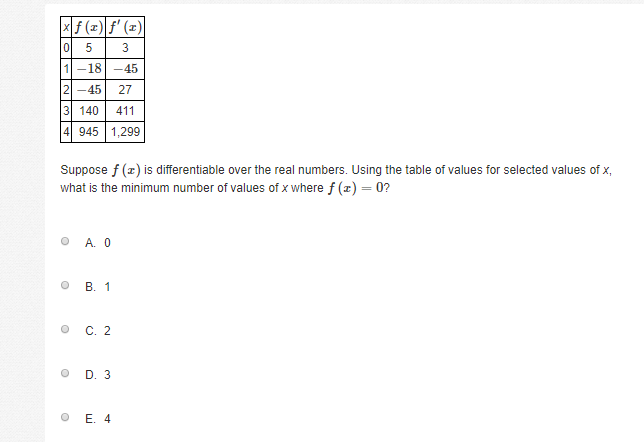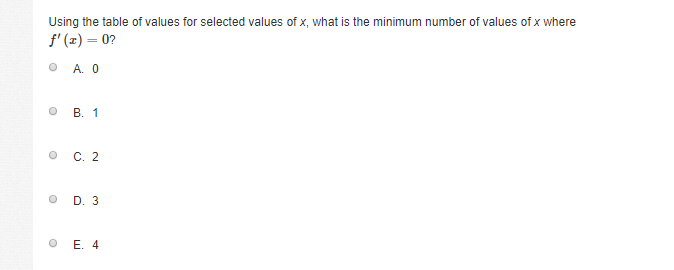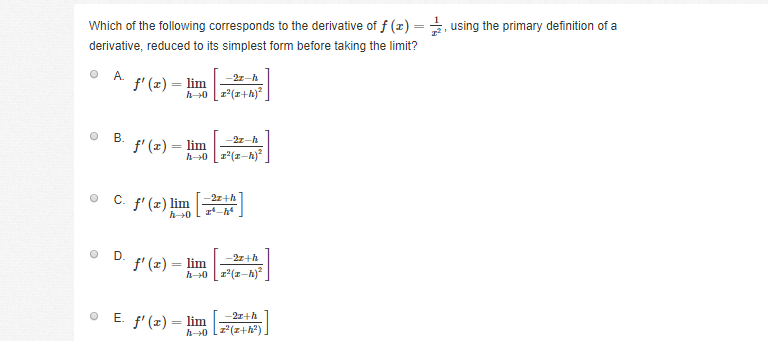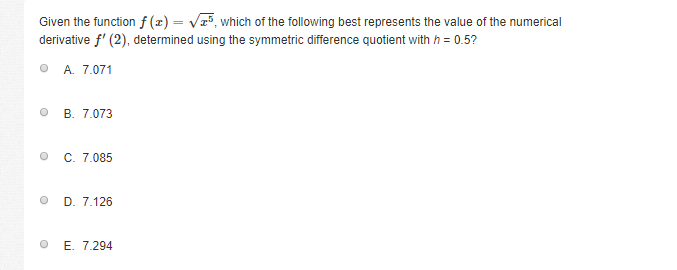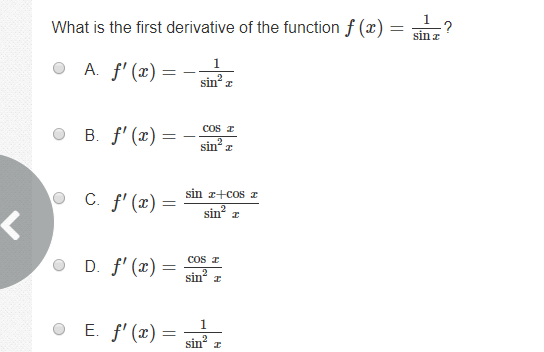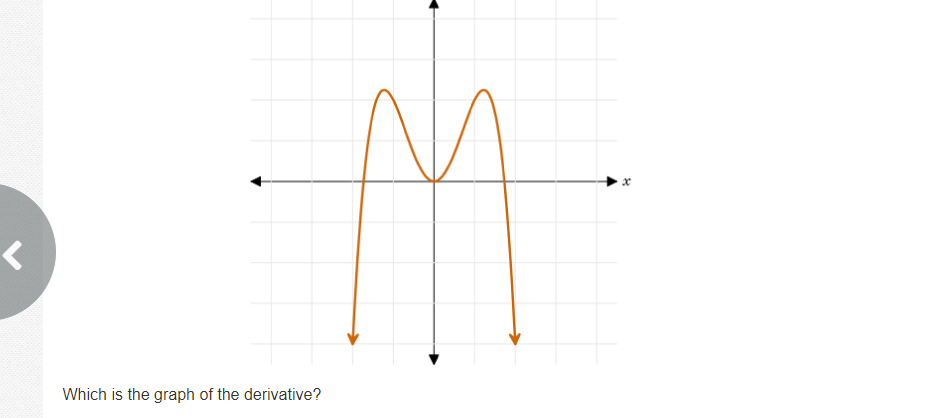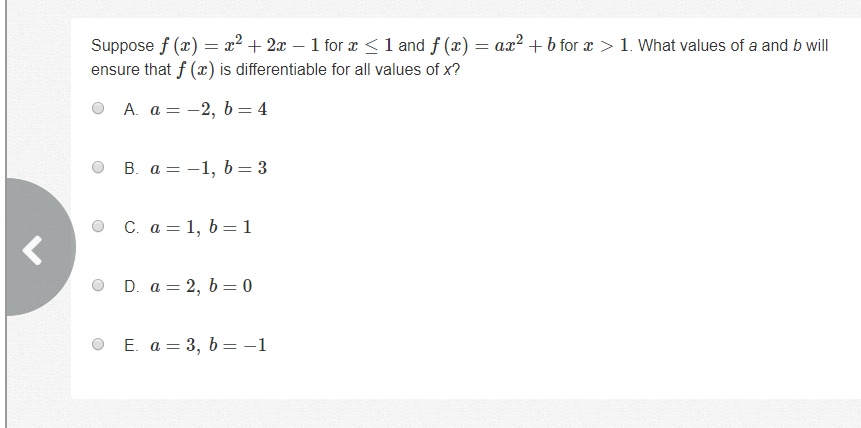calc help @mhchen
For the first question. Horizontal asymptotes happen if there is a limit to infinity and negative infinity. Can you find limit as x goes to infinity and negative infinity?
I see only 1 horizontal asymptote of 1
That's odd. Did you do \[\lim_{x \rightarrow \infty} \frac{1-\frac{2}{x^2}}{2|1|+\frac{3}{x^3}} = \frac{1}{2}\] \[\lim_{x \rightarrow -\infty} \frac{-x-\frac{2}{x}}{2|-x|+\frac{3}{x^2}} = \frac{-1}{2}\]
btw when x is negative. x^3 is also negative so that's why as x goes to negative infinity x^3 also becomes negative.
I see it on the graph and make only lists 1 lol but I see 1 and the 1/2 so it's 1/2 right? the answer 1/2
well actually the distance between 1/2 and -1/2 is 1
wait let me try to graph it
see it now?
oh okay
alright. 2nd picture. f(x) is continuous if there's no discontinuities. Here the function splits apart when x = 3. Basically when x=3. f(x) has to be the same for x+1 and x^2-2x + a when x=3 x+1 = 4 Now you need to solve 4 = x^2-2x+a when x = 3
a is 1
ye
next one
okay this third one looks hard. I know that a removable discontinuity happens when you have like \[\frac{(x+a)(x-4)}{(x+a)}\] here there's a removable discontinuity at -a hmmm
so -pi?
OH I got it. If the denominator is 0 and the numerator is 0 then it's a removable discontinuity. if x = -pi then it's sin(0)/0 so YES
if x = pi then it's also sin(0)/0 so pi and -pi both work
okay
but if x = 0. Then it'll be 0/-pi^2 so that is NOT a removable discontinuity. A
thank you so much! I shouldn't have too many more I hope and after today I'll be done with this old curriculum and may not need much help in the course!
okay so for the first one. You only need to know if it's positive or negative. if f'(x) is positive. it's going up. if it's negative. It's going down. f(x) just tells you where it's at. if f(x) is positive and f'(x) is positive. It's like this: |dw:1539703154476:dw| if f(x) is positive and f'(x) is negative it's like this: |dw:1539703185440:dw| If f(x) is negative and f'(x) is positive It's like this: |dw:1539703207002:dw| if f(x) is negative and f'(x) is negative it's like this: |dw:1539703234097:dw| now just connect the dots to figure out when it crosses the x-axis
|dw:1539703262939:dw| right?
|dw:1539703315921:dw|
|dw:1539703346910:dw| Then if we connect them it looks like this. it HAS to cross the x-axis 2 times.
so the question is basically asking how many times it crosses the x-axis?
yeah. cause when it crosses the x-axis. f(x)=0
so the answer is 2
ye
now f'
|dw:1539703552564:dw| That's when the line is perfectly straight. It does that 2 times. ignore the one on the very top that doesn't have to be there
so both are 2?
yeah
This 3rd one looks really hard. I don't know if I can help you on it
that's okay I'll figure it out
okay well it's basically \[\frac{f(x+h)-f(x)}{h}\] but simplify all that crap
and I think the 4th picture is the same formula but this time h=0.5 and x = 2
That's just \[(\sin(x))^{-1}\] use the chain rule where u = sin(x) \[(u^{-1})'*(u)' = -u^{-2}*(\cos(x)) = -(\sin(x))^{-2}*\cos(x) = \frac{\cos(x)}{-\sin(x)^2}\]
and second derivative is derivative of that right?
yeah
For the first one: |dw:1539704672700:dw|
|dw:1539704754217:dw| if there is no f'(x) = 0 then maybe it's like this. As long as f'(x) is positive then it's at the very right of the interval. f(2).
is the max 6?
uh hold on \[0 = 12x^2+12x-8, x=-1.457427107756338\] f(-1.457427107756338) = 10.021 ish
They gotta give you a calculator for THAT problem. dang
virtual school lol
|dw:1539705641878:dw| for the next problem. Find out where the graph changes direction.
|dw:1539705699449:dw|
So it should be like this |dw:1539705730953:dw|
cool!
3rd picture is easy. You gotta figure out how to connect the derivative of both functions 2x + 2 = 2ax for x = 1; 2(1) + 2 = 2a(1) 4 = 2a a = 2
so d
ye. let me double check that with a graph
Okay last one: if something is perpendicular, then the slope is inverted. f'(2) = 2. So slope is 2. Invert that and slope is -1/2 now you know f(2) = 5 so 5 = (-1/2)x + b find b when x = 2
so 4 so c ?
Actually b
5 = -(1/2) (2) + 6
oh right it's -1 so yeah
4 more questions? last 4
I'm tired bro. I gotta start studying me own stuff for my midterm exam tomorrow
okat ty for helping!
Join our real-time social learning platform and learn together with your friends!

